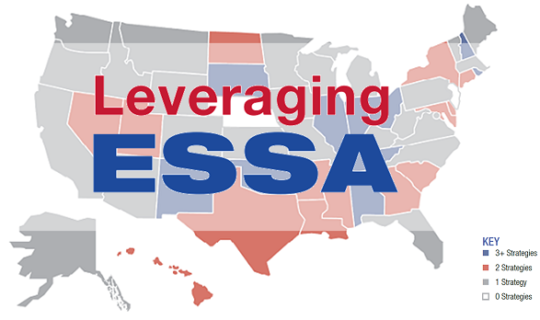Resource: Making Career Readiness Count
2019 Update
The third edition of the Making Career Readiness Count report – which was developed by Advance CTE, Achieve, Education Strategy Group and the Council of Chief State School Officers through the New Skills for Youth initiative – examines how states are measuring college and career readiness in their state and federal accountability systems. The number of states measuring career readiness has more than doubled since 2014. This trend demonstrates a widespread commitment to valuing career readiness in high school, fueled by the recognition that students need postsecondary preparation in order to be economically successful and accelerated by new flexibility in the Every Student Succeeds Act (ESSA).
The report uses four categories of college and career readiness (based on an expert workgroup and outlined in the report Destination Known: Valuing College AND Career Readiness in State Accountability Systems): Progress Toward Post-High School Credential; Co-Curricular Learning and Leadership Experiences; Assessment of Readiness; and Transitions Beyond High School.
- Seventeen states and DC include Progress Toward Post-High School Credential measures in their state or federal accountability systems. These measures include the percentage of students completing an academic college- and career-ready course of study, completing a career pathway, and attainment of postsecondary credits while in high school, as represented by dual enrollment. Another 22 states included measures out of sequence with the Destination Known
- Twelve states include a Co-Curricular Learning and Leadership Experiences measure in their state or federal accountability systems. Work-based learning is the career measure most often used in this category.
- All told, 30 states and the District of Columbia measure Assessment of Readiness as defined in Destination Known, and another 12 states include out of sequence measures. Assessment of Readiness measures include attainment of state-defined college- and career-ready level on a high school summative assessment, completion of a pathway-aligned assessment or demonstration of technical skill (AP, IB, industry credentials), or a performance-based demonstration of skill. The vast majority of states counted under the Assessment of Readiness category are measuring industry-recognized credential attainment.
- Eight states include information on Transitions Beyond High School in their formal state and federal accountability calculations, reporting either postsecondary enrollment or postsecondary enrollment without the need for remediation.
With all of the progress states have made, there is still room to strengthen and improve measures of career readiness. For example, states should be explicit about how career readiness components – such as work-based learning, industry-recognized credentials and dual enrollment – align to each other and to a students’ career pathways. They should also be transparent with their data and put thought and care into designing accountability systems that value and encourage the experiences that are best aligned with the outcomes they want for students.







